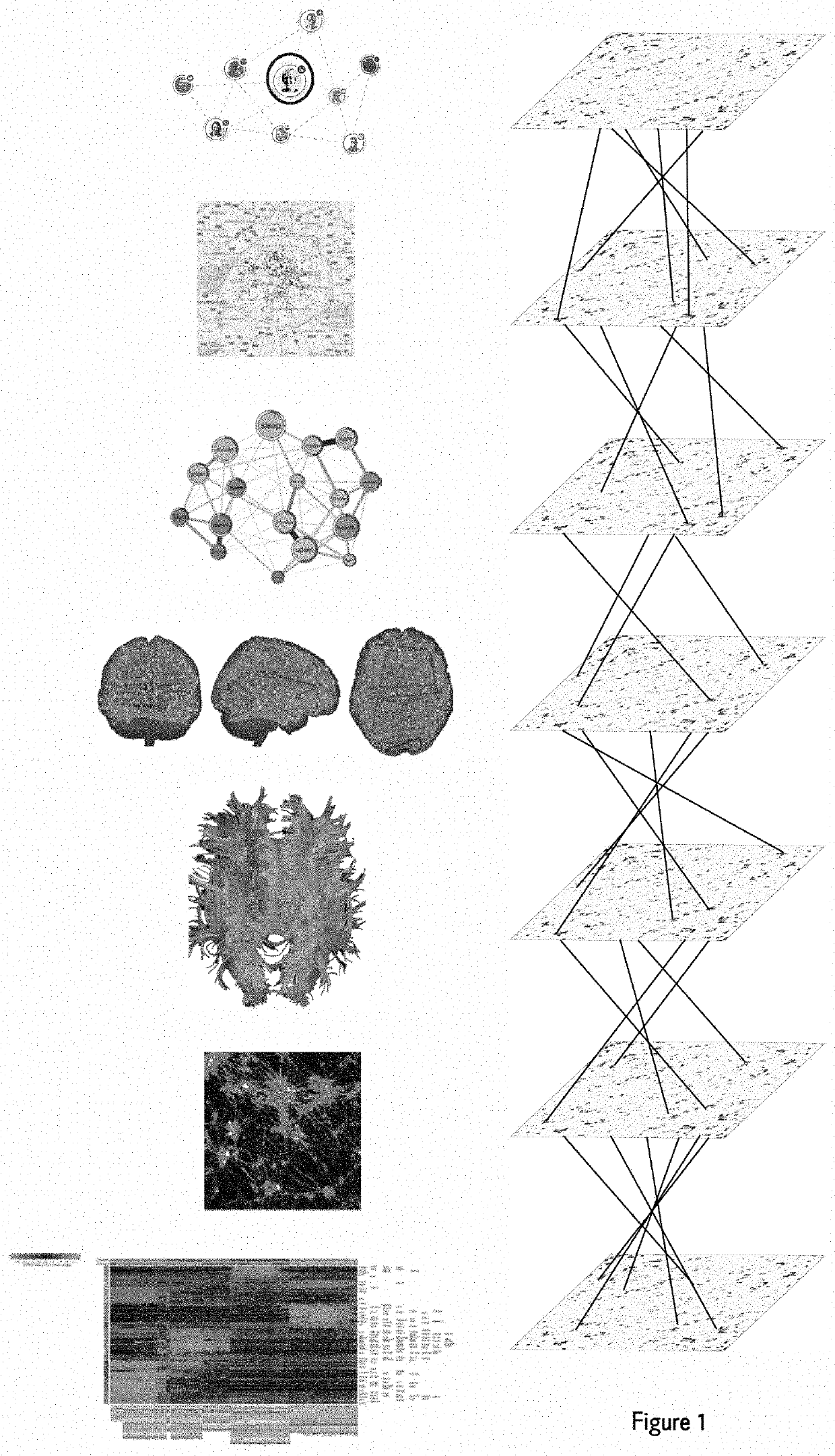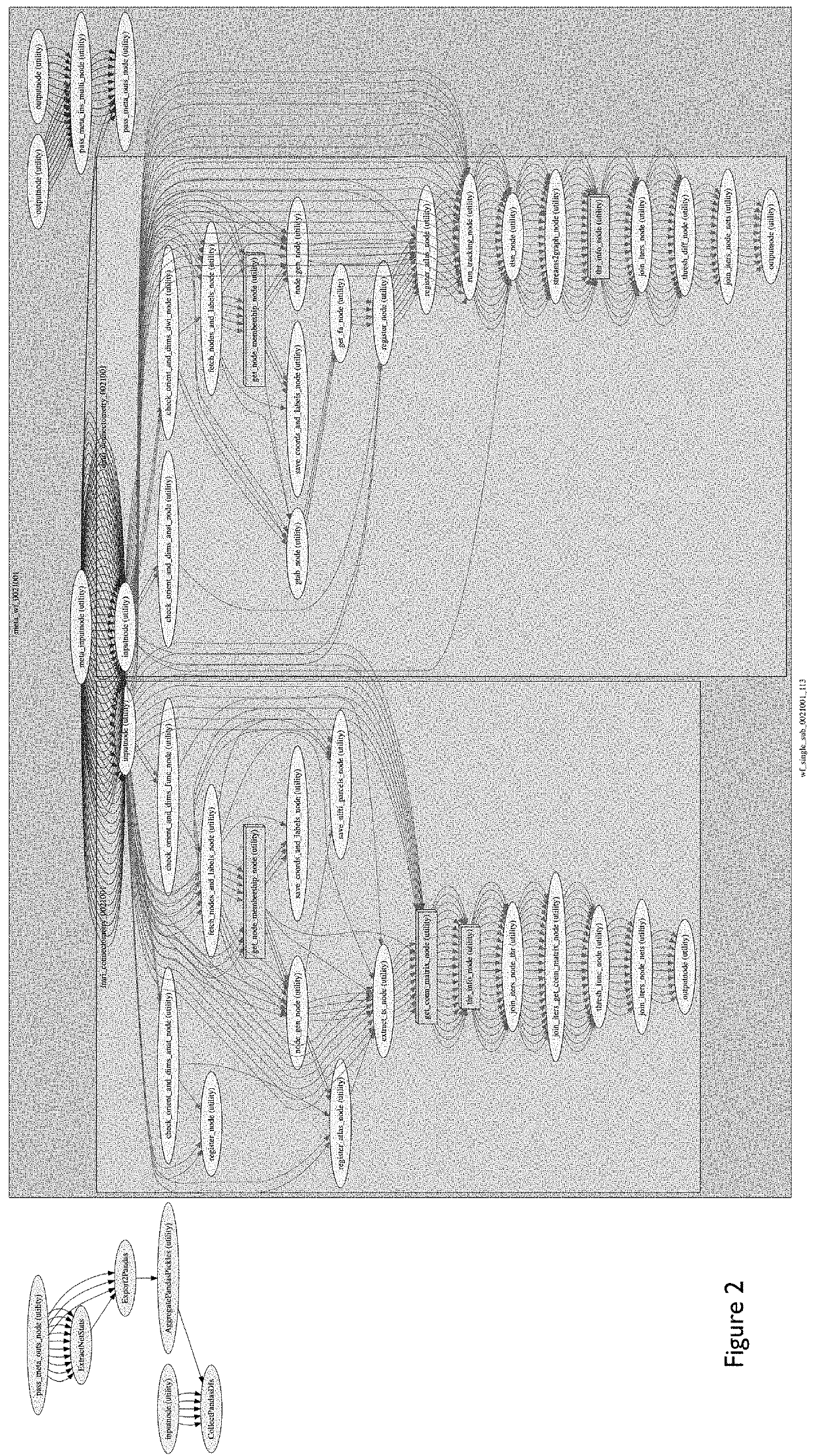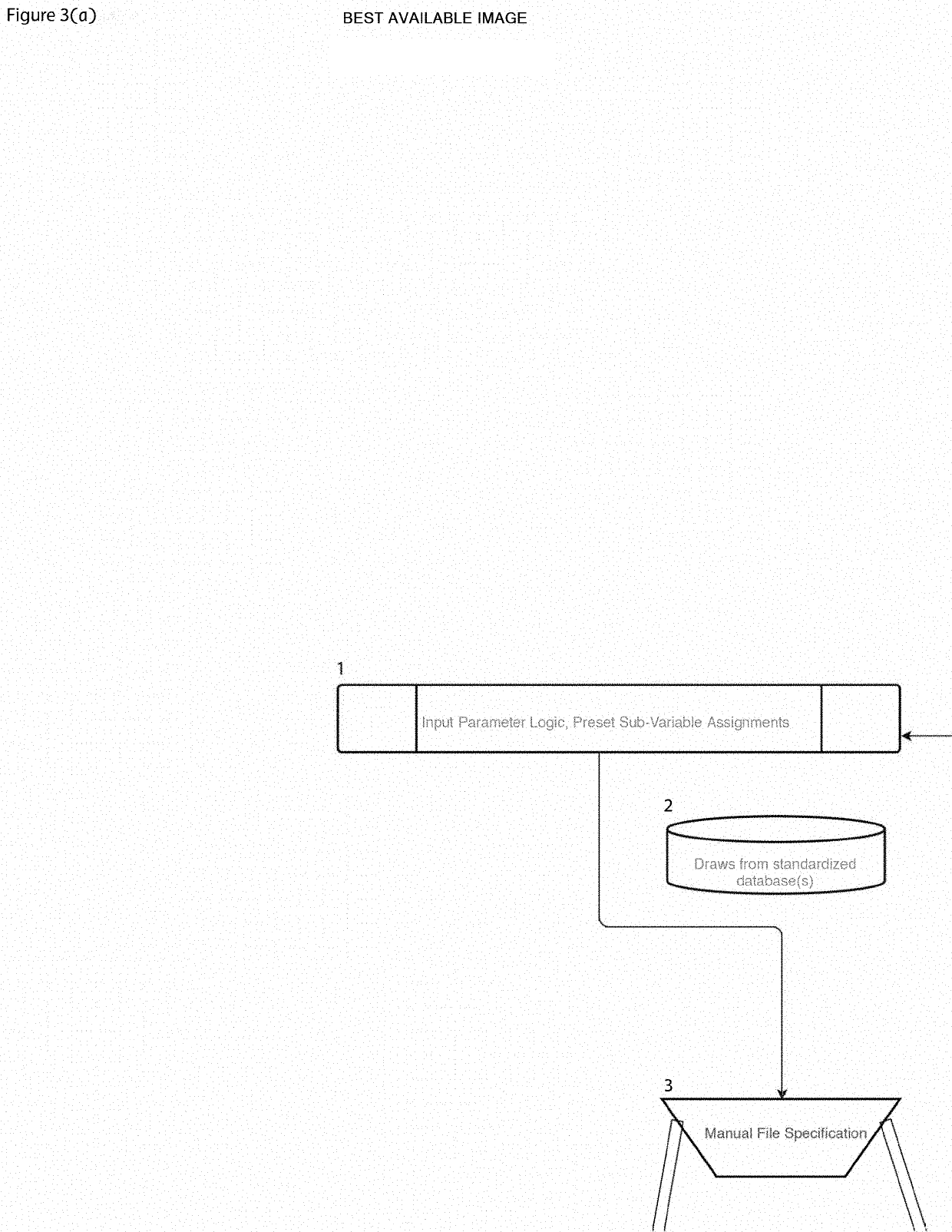Automated feature engineering of hierarchical ensemble connectomes
a hierarchical ensemble and feature engineering technology, applied in knowledge representation, multi-programming arrangements, instruments, etc., can solve the problems of unnecessarily high dimensionality, large number of isolated network vertices that require pruning, and existing neuroimaging technology is poorly suited for fine-grained study of brain networks. , to achieve the effect of facilitating interaction
- Summary
- Abstract
- Description
- Claims
- Application Information
AI Technical Summary
Benefits of technology
Problems solved by technology
Method used
Image
Examples
examples of embodiments
[0056](1) A user has a noise-reduced functional MRI (fMRI) data for a given individual with an arbitrary unique identified of 997. That dataset, called “filtered_func_data_clean_standard.nii.gz” is in ‘nifti’ format and here consists of 182 volumes of 3D image matrices whose point values represent signal intensity of hemodynamic response as captured from the MRI machine. The user also has the individual's noise-reduced gene expression data in the form of a .txt file called ‘expression_data.txt’ where rows correspond to a given genetic marker and columns consist of n independent measurements of the mRNA gene expression levels for each corresponding genetic marker. The user wishes to generate hierarchical ensemble connectome features based on this multimodal genetic-fMRI data that can be used for subsequent ensemble machine-learning predictions of the given individual's likelihood of Alzheimer's disease. In particular, research has shown that functional brain network disturbances of t...
PUM
 Login to View More
Login to View More Abstract
Description
Claims
Application Information
 Login to View More
Login to View More - R&D
- Intellectual Property
- Life Sciences
- Materials
- Tech Scout
- Unparalleled Data Quality
- Higher Quality Content
- 60% Fewer Hallucinations
Browse by: Latest US Patents, China's latest patents, Technical Efficacy Thesaurus, Application Domain, Technology Topic, Popular Technical Reports.
© 2025 PatSnap. All rights reserved.Legal|Privacy policy|Modern Slavery Act Transparency Statement|Sitemap|About US| Contact US: help@patsnap.com



